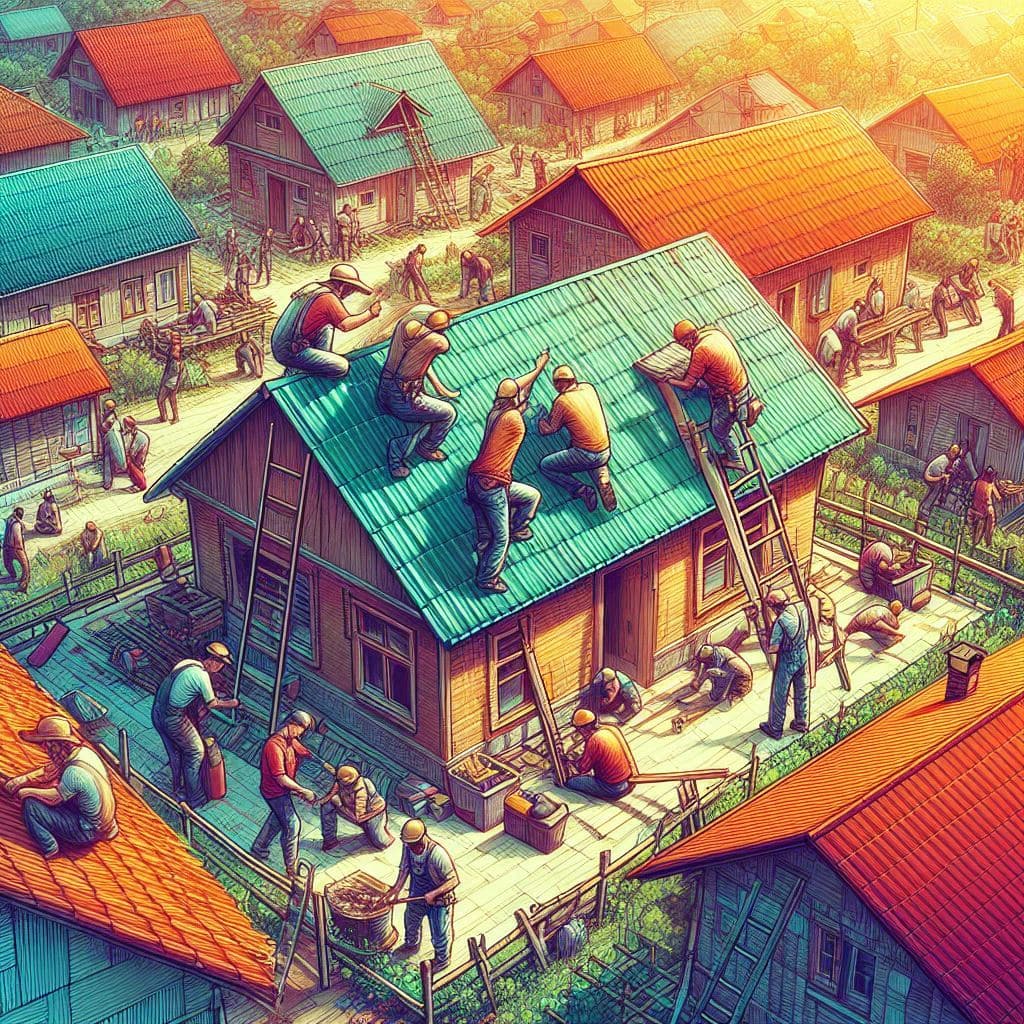A few days ago we discussed Battling the Elements: Coastal Roofing Challenges in Florida’s Beachside Communities. Today we will talk about the inland areas of Florida, which are rarelt discussed. Florida’s inland areas, characterized by lush landscapes, bustling cities, and a mix of suburban and rural communities, present unique roofing challenges that differ from those faced by coastal regions. While they may be less susceptible to saltwater exposure and hurricane winds, inland areas experience their own set of environmental and climate-related issues. This blog post explores the specific challenges faced by homeowners in Orlando, FL, Oviedo, FL, Clermont, FL, and Sanford, FL, and offers insights into effective roofing solutions tailored to these regions.
Climate and Environmental Impact
Rain and Moisture

Inland Florida is no stranger to heavy rainfall and high moisture levels, which can significantly impact roofing materials and structural integrity. Homes in areas like Orlando, FL and Sanford, FL often face challenges related to water infiltration, mold growth, and wood rot.
- Rainfall Impact: The high volume of rainfall can lead to leaks, especially if roofs are not properly sealed or maintained. Water accumulation can cause shingles to deteriorate and wood components to weaken.
- Moisture-Related Issues: Constant exposure to moisture can promote the growth of mold and mildew, which can further damage roofing materials and pose health risks to occupants.
Statistics: According to the Florida Department of Environmental Protection, inland regions receive an average annual rainfall of 50 to 60 inches, with some areas experiencing even higher amounts【Source: Florida Department of Environmental Protection】. This makes proper waterproofing and drainage systems essential for maintaining roof integrity【Source: Florida Climate Center】.
Heat and UV Exposure
Inland areas like Oviedo, FL and Clermont, FL experience intense heat and UV exposure, which can accelerate the degradation of roofing materials. This is a significant concern for homeowners looking to maintain energy efficiency and extend the lifespan of their roofs.
- UV Damage: Prolonged exposure to UV rays can cause roofing materials to fade, crack, and become brittle, reducing their effectiveness and aesthetic appeal.
- Heat-Related Expansion: High temperatures can lead to thermal expansion, causing shingles and tiles to warp or detach from the roof structure.
Statistics: Data from the Environmental Protection Agency (EPA) indicates that Florida ranks among the highest states for UV index levels, particularly in inland areas【Source: EPA】. This underscores the need for UV-resistant roofing materials and coatings【Source: Weather Atlas】.
Common Roofing Issues in Inland Areas

Oviedo and Winter Springs
Oviedo, FL and Winter Springs, FL are known for their picturesque neighborhoods and vibrant communities. However, these areas face roofing challenges related to moisture and vegetation.
- Mold Growth: The combination of humidity and organic debris from surrounding vegetation can lead to mold growth on roofs. Regular cleaning and inspections are crucial to prevent mold-related damage.
- Vegetation Debris: Overhanging trees can deposit leaves and branches on roofs, leading to clogged gutters and water retention. Homeowners should consider trimming trees and maintaining clean gutters.
Examples: Local roofing companies report that mold and debris-related issues account for a significant portion of roofing service calls in Oviedo and Winter Springs【Source: Local Roofing Companies】.
Lake Mary and Sanford
Lake Mary, FL and Sanford, FL are thriving inland communities that face unique roofing challenges related to aging infrastructure and extreme weather events.
- Aging Roofs: Many homes in these areas have older roofs that may not withstand modern environmental stresses. Homeowners should consider roof upgrades or replacements to improve durability.
- Storm Damage: Inland areas still experience severe storms that can damage roofs. Reinforced roofing systems and stormproof materials are essential to mitigate storm-related damage.
Insights: Interviews with roofing professionals in Lake Mary and Sanford reveal that proactive maintenance and timely upgrades are key to preventing costly repairs【Source: Interviews with Roofing Professionals】.
Solutions and Recommendations
Roofing Material Choices
Selecting the right roofing materials is crucial for homeowners in inland areas. Durable, heat-resistant, and moisture-resistant materials can significantly enhance the performance and lifespan of roofs.
- Asphalt Shingles: Known for their affordability and versatility, asphalt shingles are a popular choice for inland homes. Choose high-quality, UV-resistant options to improve durability.
- Clay and Concrete Tiles: These materials offer excellent resistance to heat and moisture, making them suitable for Florida’s inland climate. They also provide a classic aesthetic that complements many architectural styles.
Statistics: Roofing industry studies show that asphalt shingles have an average lifespan of 20-30 years in inland environments, while clay and concrete tiles can last 30-50 years【Source: Roofing Industry Studies】.
Energy-Efficient Roofing
Energy efficiency is a top priority for many Florida homeowners, especially in inland areas where cooling costs can be significant. Investing in energy-efficient roofing solutions can help reduce energy consumption and improve indoor comfort.
- Reflective Roofing: Reflective coatings and materials can help deflect sunlight and reduce heat absorption, lowering cooling costs.
- Insulation and Ventilation: Proper insulation and ventilation are crucial for maintaining energy efficiency. Ensure your roofing system includes adequate insulation and vents to regulate temperature.
Data: The Energy Star program reports that energy-efficient roofing materials can reduce cooling costs by up to 15%, making them a worthwhile investment for homeowners【Source: Energy Star Program】.
Conclusion
Florida’s inland areas, including Orlando, FL, Oviedo, FL, Clermont, FL, and Sanford, FL, present unique roofing challenges that require specialized solutions. From managing moisture and vegetation to combating heat and UV exposure, homeowners must prioritize quality materials and regular maintenance to protect their investments. By understanding these challenges and implementing effective solutions, residents can enjoy the benefits of a durable, energy-efficient roof that stands the test of time.
